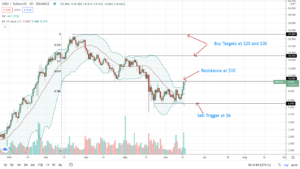
Calculated in small units of Ether called gwei, gas fees are payments paid by users to the Ethereum blockchain for the computer energy necessary to process and confirm transactions on the network. These gas fees are majorly influenced by transaction demand between miners and users of Ethereum. The demand for transactions can become so high that miners can opt to prioritize those who pay the most, which will in turn encourage users to pay more in exchange for the ability to have their transactions completed fast. Ethereum’s gas fees are known to be more expensive than those of other cryptocurrencies. This may be related to the increase in the price of ETH as well as the increase in the quantity of traffic on the network. The value of ETH is increasing, and transaction fees are becoming higher when compared with fiat. As more and more Ethereum decentralized applications are being adopted, the gas fees tend to go higher. For instance, the average gas fees were as high as $68 in May of last year, around the same time DeFi and NFTs gained a lot of popularity. As the demand for ETH increased with more people buying NFTs, the gas fees increased in tandem with the rise in the crypto price. Image from CoinMetrics showing the average and median price of ETH gas fees Why Did ETH Gas Fees Fall to the Lowest in Six Months? According to CoinMetrics data, ETH gas fees have been falling since the second week of January, recently reaching the lowest level since August of 2021. The recent decline in gas costs can be attributed to a decline in interest in Ethereum-based decentralized applications. The high Ethereum gas fees have been a constant concern for users. In order to address this issue, decentralized apps are being developed on different networks with lower gas prices and faster transaction speeds like Solana, Binance Smart Chain, and Avalanche, among others. The price of Ethereum wasn’t spared when the general crypto market suffered a setback after the news of Russia’s invasion of Ukraine broke out, reaching a low of $2,800 at one point. A Lower Ethereum price value equals a lower gas fee. There has also been a waning interest in NFTs, with trading volume at its lowest this year. Ethereum fuel prices were at their greatest point when NFT popularity was booming last year. Due to their popularity, there was a spike in traffic on the network, which resulted in an increase in gas prices. The reduction in NFT interest will result in a reduction in transaction congestion, which will in turn result in a reduction in gas fees. According to DappRadar, which tracks and analyzes decentralized applications, trading activities in NFT platforms have been down drastically in the past 30 days. Ethereum trading volume on major NFT platforms like OpenSea and CryptoPunks have been down 39.58% and 29.53% respectively in a 30-day period. Image from DappRadar showing trading volume on major NFT platforms. Ethereum developers have been working on switching the network from proof-of-work to proof-of-stake to reduce gas fees and make the network faster. That, however, is yet to come as Ethereum core developer Tim Beiko recently confirmed in a tweet that the switch will come later than expected.
The post Here’s Why Ethereum Gas Fee Reached Its Lowest In Six Months first appeared on Cryptoknowmics-Crypto News and Media Platform.
The post Here’s Why Ethereum Gas Fee Reached Its Lowest In Six Months appeared first on Cryptoknowmics-Crypto News and Media Platform.
- Coinsmart. Europe’s Best Bitcoin and Crypto Exchange.
- Platoblockchain. Web3 Metaverse Intelligence. Knowledge Amplified. FREE ACCESS.
- CryptoHawk. Altcoin Radar. Free Trial.
- Source: https://www.cryptoknowmics.com/news/heres-why-ethereum-gas-fee-reached-its-lowest-in-six-months/?utm_source=rss&utm_medium=rss&utm_campaign=heres-why-ethereum-gas-fee-reached-its-lowest-in-six-months
- "
- 2021
- 39
- According
- activities
- address
- among
- applications
- apps
- around
- AUGUST
- Avalanche
- average
- become
- being
- binance
- Block
- blockchain
- Buying
- chain
- CoinMetrics
- come
- compared
- Core
- Costs
- crypto
- Crypto Market
- cryptocurrencies
- CryptoPunks
- data
- decentralized
- Decentralized Applications
- DeFi
- Demand
- developed
- Developer
- developers
- DID
- different
- Display
- down
- encourage
- energy
- ETH
- Ether
- ethereum
- Ethereum blockchain
- Ethereum developers
- Ethereum Price
- exchange
- expected
- FAST
- faster
- Fees
- Fiat
- First
- Fuel
- GAS
- gas fees
- General
- greatest
- here
- High
- higher
- HTTPS
- image
- Increase
- increased
- increasing
- interest
- issue
- January
- known
- Level
- major
- Market
- Media
- Miners
- months
- more
- most
- necessary
- network
- networks
- news
- NFT
- NFT platforms
- NFTs
- OpenSea
- order
- Other
- paid
- Pay
- payments
- People
- Platforms
- Point
- popularity
- price
- process
- Proof-of-Stake
- Proof-of-Work
- reduce
- SIX
- Six months
- small
- smart
- So
- Solana
- Switch
- time
- Trading
- traffic
- transaction
- Transactions
- tweet
- Ukraine
- users
- value
- volume
- week
- WHO
- working
- year











